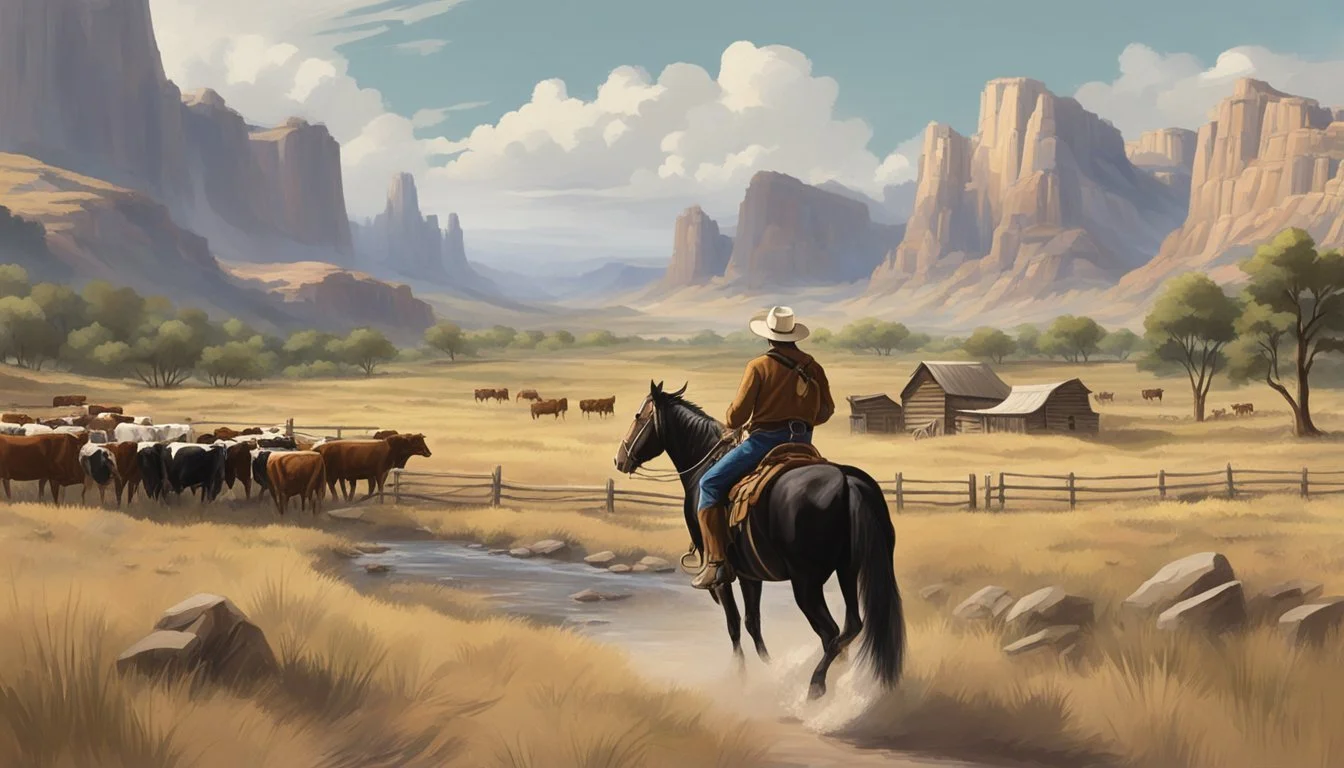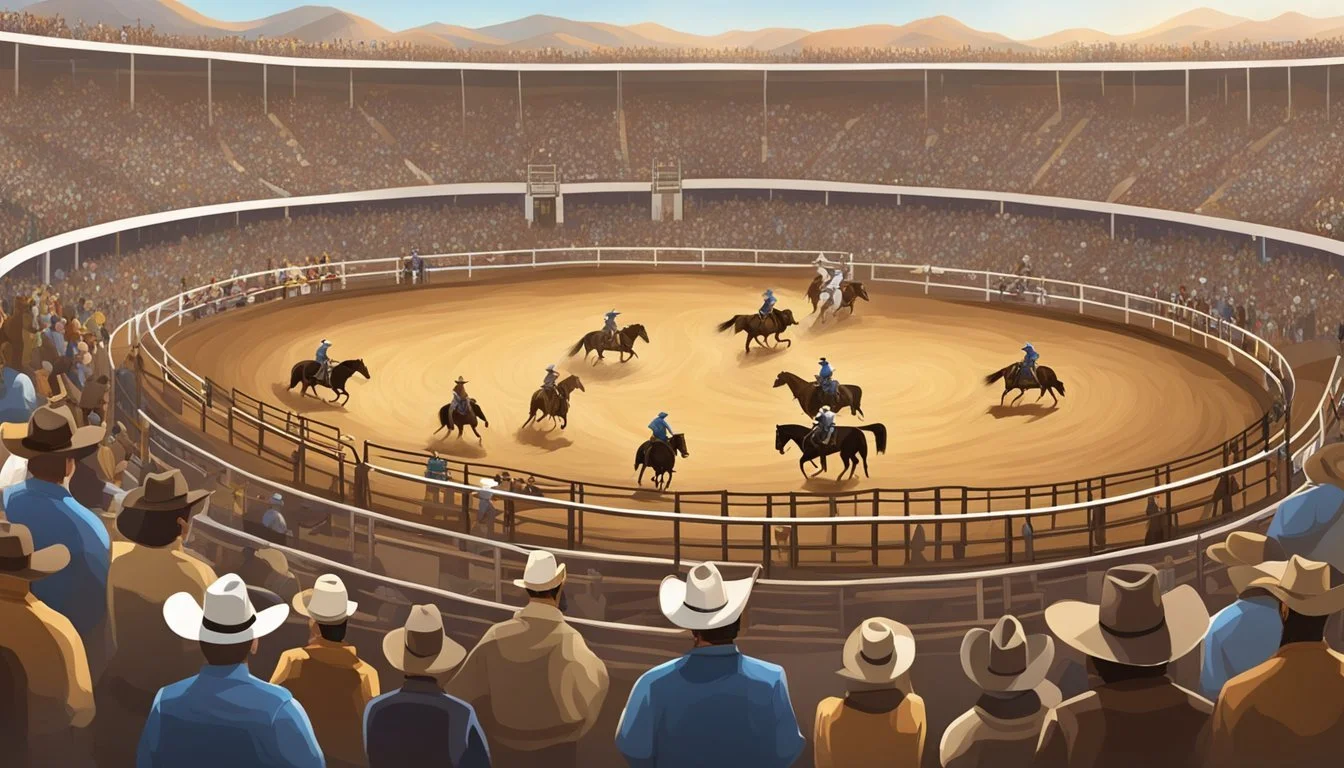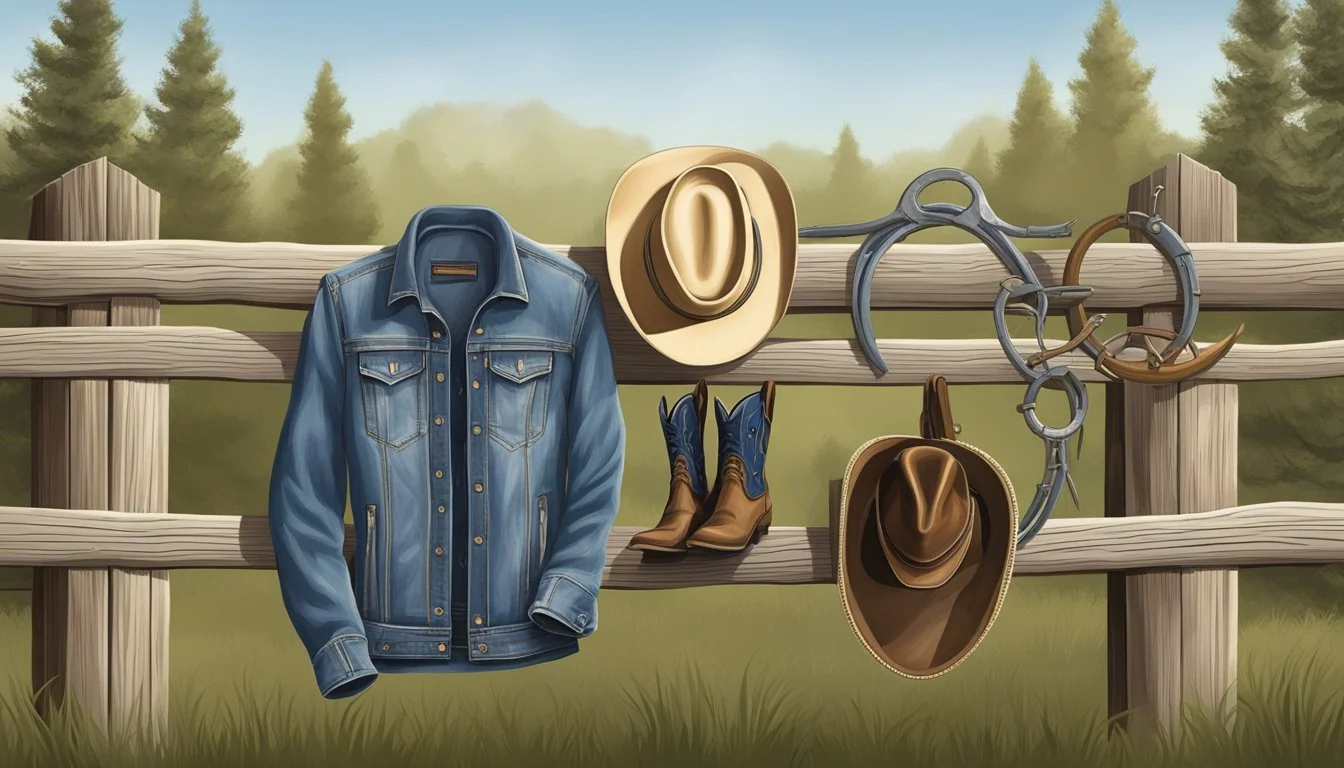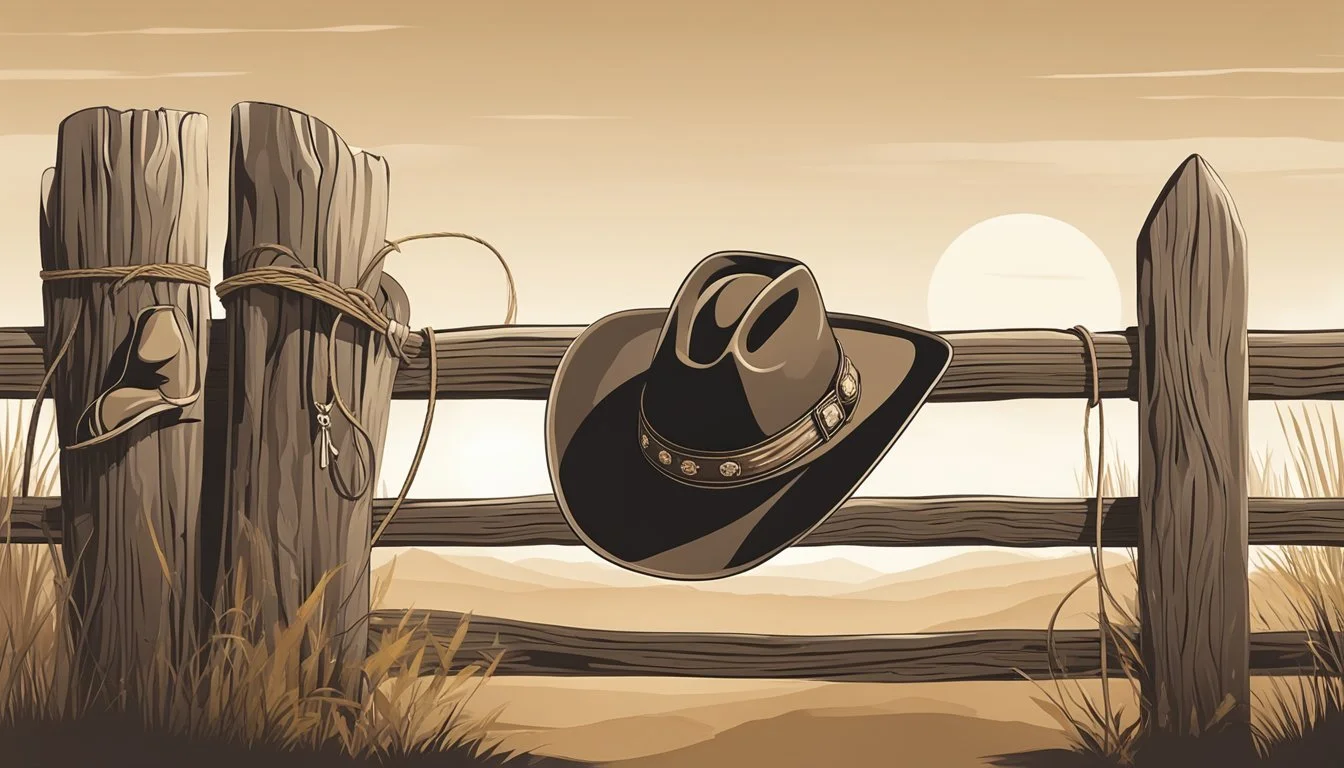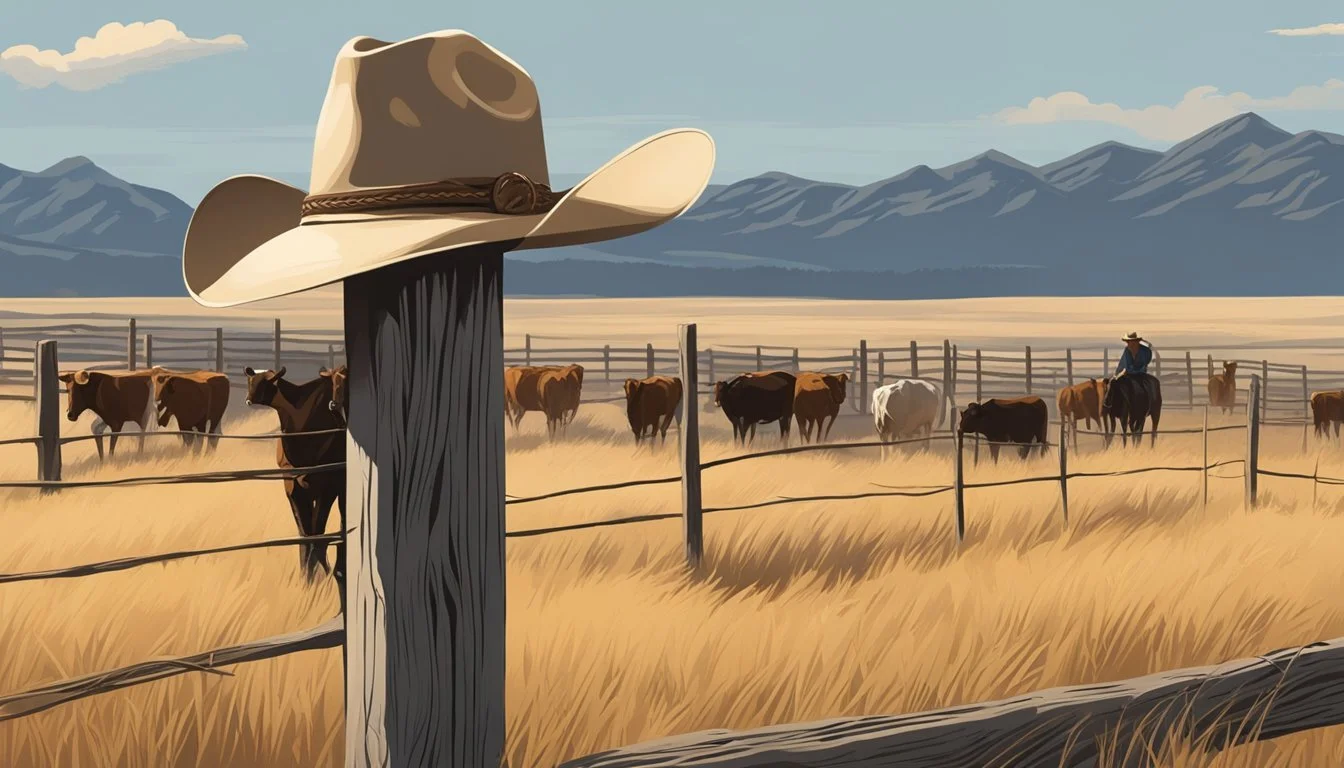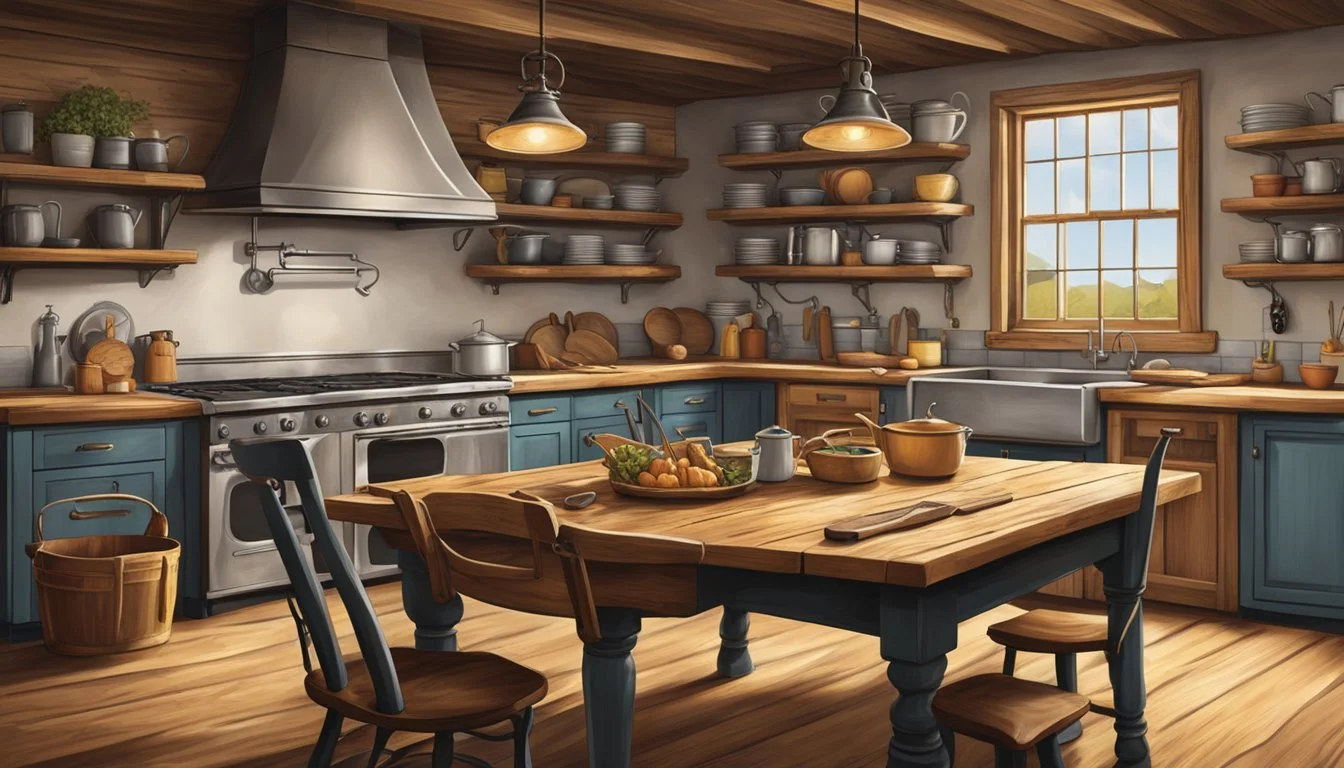6 Yellowstone Traditions That Reflect Real Ranch Life
Authenticity in Modern Western Drama
The hit TV series Yellowstone has captivated audiences with its portrayal of ranch life in the modern American West. While the show dramatizes many aspects for entertainment value, it also incorporates authentic traditions and practices from real cattle ranches.
Several customs depicted in Yellowstone reflect genuine ranch rituals that have been passed down through generations of cowboys and ranchers. From branding cattle to horseback riding across vast landscapes, these traditions showcase the enduring spirit and work ethic of ranching communities. By exploring how the show's portrayal aligns with reality, viewers can gain insight into the true nature of ranch life beyond the television screen.
1) Cattle Branding
Cattle branding remains a fundamental practice in modern ranching, accurately portrayed in the TV series Yellowstone. The show depicts the age-old tradition of marking livestock with unique symbols to establish ownership.
On the Dutton Ranch, branding cattle is shown as a communal event that brings together ranch hands and family members. This reflects real-world practices where branding often becomes a social gathering for ranchers.
The series showcases the practical aspects of branding, including heating irons and applying them to cattle. It also illustrates the precision and skill required to perform this task efficiently and humanely.
Yellowstone's depiction of branding extends beyond its practical purpose, highlighting its symbolic significance. The brand represents loyalty to the ranch and its legacy, mirroring real-life ranching culture where brands often carry deep family history.
The show's emphasis on branding as a rite of passage for new ranch hands aligns with actual ranching traditions. In many real cattle operations, participating in branding signifies acceptance into the ranching community.
2) Horseback Riding
Horseback riding is a cornerstone of ranch life, and Yellowstone authentically portrays this essential skill. The show's characters frequently mount up to tend to cattle, patrol property lines, and traverse the rugged Montana landscape.
Yellowstone depicts both traditional cowboy techniques and modern equestrian practices. Characters demonstrate expert horsemanship, from roping cattle to navigating treacherous mountain trails.
The series showcases the deep bond between ranchers and their horses. This relationship is vital for successful ranch operations and reflects the real-life importance of horses in Western culture.
Yellowstone's creator, Taylor Sheridan, ensured authenticity by teaching the actors proper riding techniques. This attention to detail brings a genuine feel to the show's equestrian scenes.
The series highlights how horseback riding remains crucial in modern ranching. Despite technological advancements, horses continue to play a significant role in managing large cattle operations and accessing remote areas of the ranch.
3) Chuckwagon Meals
Chuckwagon meals are a staple of ranch life, faithfully portrayed in Yellowstone. These mobile kitchens originated during cattle drives, providing sustenance for cowboys on the trail.
On the show, the Dutton Ranch often features scenes of communal dining around the chuckwagon. This reflects the real-life importance of these meals in fostering camaraderie among ranch hands.
Typical chuckwagon fare includes hearty, easy-to-prepare dishes. Beans, beef, and biscuits are common, mirroring the practical needs of ranchers working long days.
The role of the cook, or "cookie," is crucial in both the show and real ranches. This person is responsible for not just cooking, but also managing supplies and sometimes offering basic medical care.
Yellowstone's depiction of chuckwagon meals showcases the enduring traditions of ranch life. It highlights how these communal eating experiences continue to play a vital role in modern ranching communities.
4) Rodeo Events
Yellowstone showcases various rodeo events that are central to ranch life and Western culture. These competitions test the skills cowboys use in their daily work on ranches.
Bull riding features prominently in the show, depicting riders attempting to stay mounted on bucking bulls for 8 seconds. This dangerous event highlights the bravery and skill required in rodeo.
Barrel racing, often performed by female characters in Yellowstone, demonstrates horsemanship as riders navigate a cloverleaf pattern around barrels at high speeds.
Calf roping, or tie-down roping, is another authentic rodeo event portrayed. Cowboys on horseback pursue and rope calves, then dismount to tie three of the calf's legs together.
Team roping appears in Yellowstone as well. This event involves two mounted riders working together to rope and immobilize a steer, reflecting the collaborative nature of ranch work.
These rodeo events in Yellowstone accurately represent real-life competitions that celebrate and preserve traditional ranching skills. They serve as a link between modern ranch life and its historical roots.
5) Cowboy Attire
Yellowstone showcases authentic cowboy attire that reflects real ranch life. The characters' clothing combines traditional Western style with modern elements, creating a distinctive look.
Denim plays a crucial role in the show's wardrobe. Characters often wear sturdy jeans paired with button-up shirts, perfect for long days of ranch work. Boots are another essential element, with characters sporting both classic cowboy boots and more practical work boots.
Outerwear is carefully chosen to suit the Montana climate. Characters don leather jackets, heavy coats, and warm vests to protect against the elements. These pieces are both functional and stylish.
Accessories complete the cowboy look. Wide-brimmed hats shield ranch workers from the sun, while belt buckles add a touch of personal flair. Bandanas serve multiple purposes, from wiping away sweat to protecting against dust.
The show's costume designers pay attention to detail, ensuring that the clothing appears lived-in and appropriate for ranch life. This authenticity helps viewers connect with the characters and their lifestyle.
6) Ranch Hand Duties
Yellowstone portrays ranch hand duties with remarkable authenticity. The show depicts cowboys engaging in various tasks essential to running a large cattle operation.
Branding cattle is prominently featured, showcasing the skilled technique required to mark livestock. Ranch hands are often seen mending fences, a crucial job for containing animals and maintaining property boundaries.
The series highlights the physical demands of ranch work through scenes of hay baling and feed distribution. These labor-intensive tasks are vital for sustaining cattle through harsh seasons.
Veterinary care is another duty accurately represented. Ranch hands assist in treating injured animals and delivering calves, demonstrating the diverse skills required in ranch life.
Yellowstone also captures the seasonal nature of ranch work. Cattle drives, a cornerstone of ranching tradition, are portrayed as grueling yet essential operations.
The show doesn't shy away from depicting less glamorous tasks like mucking out stalls and repairing equipment. These scenes reinforce the gritty reality of daily ranch life.
Authenticity in Set Design
The set design of Yellowstone masterfully captures the essence of genuine ranch life through meticulous attention to detail. This commitment to authenticity enhances the viewing experience and immerses audiences in the world of the Dutton Ranch.
Collaboration with Real Ranch Owners
The production team works closely with actual ranch owners to ensure accuracy in their portrayals. They consult on everything from building layouts to daily operations. This collaboration allows the show to depict realistic ranch interiors and exteriors.
Set designers study authentic ranch homes, barns, and outbuildings. They incorporate period-appropriate furnishings, tools, and decor. The team even replicates wear and tear on structures and equipment to convey a lived-in feel.
Real ranch owners often lend their properties for filming, adding another layer of authenticity. This approach allows Yellowstone to showcase genuine Montana landscapes and architecture.
Use of Genuine Ranch Equipment
Yellowstone's set designers prioritize using authentic ranch equipment in their scenes. They source vintage and modern tools, vehicles, and machinery typically found on working ranches.
The show features real tractors, hay balers, and cattle chutes. Authentic tack rooms display well-worn saddles, bridles, and other horse gear. Scenes in the barn include genuine grooming tools and veterinary supplies.
Production designers also incorporate authentic ranch vehicles like pickup trucks and ATVs. They ensure these vehicles show appropriate signs of use, such as mud splatters or minor dents.
This attention to detail extends to smaller items like ropes, boots, and work gloves. By using genuine equipment, Yellowstone creates a believable and immersive ranch environment.
Cowboy Culture and Traditions
Cowboy culture and traditions form the backbone of Yellowstone's authentic portrayal of ranch life. The show depicts time-honored practices and skills that have defined the American West for generations.
Horsemanship and Riding Techniques
Yellowstone showcases the integral role of horses in cowboy culture. Characters demonstrate expert horsemanship, from mounting and dismounting to controlling their steeds with subtle cues. The series highlights various riding styles, including Western and English disciplines.
Scenes often feature cowboys breaking in young horses, a critical skill for ranch work. Viewers witness the patience and skill required to train horses for cattle herding, roping, and other essential tasks.
The show also emphasizes proper horse care. Characters are seen grooming, feeding, and tending to injuries, reflecting the deep bond between cowboys and their equine partners.
Rodeo and Cattle Driving Stories
Rodeo events feature prominently in Yellowstone, showcasing the competitive spirit of cowboy culture. Characters participate in bull riding, calf roping, and barrel racing, demonstrating the athleticism and courage required for these high-stakes competitions.
The series also depicts traditional cattle drives, a cornerstone of ranch life. These scenes highlight the teamwork and communication necessary to move large herds across vast distances.
Yellowstone weaves in stories of legendary rodeo champions and cattle drives, connecting modern ranch life to its historical roots. These tales serve to educate viewers about the rich heritage of the American West.
Cuisine Reflecting Ranch Life
The hit TV series Yellowstone offers authentic glimpses into ranch cuisine. Traditional meals and recipes featured on the show mirror real-life ranch cooking, emphasizing hearty, rustic fare that fuels long days of hard work.
Traditional Ranch Meals and Recipes
Ranch cuisine in Yellowstone centers around protein-rich, stick-to-your-ribs dishes. Beef features prominently, with steaks, roasts, and chili making regular appearances. Hearty breakfasts often include eggs, bacon, and biscuits to energize ranch hands for their daily tasks.
Cast iron cooking is a staple technique, used for everything from cornbread to cowboy coffee. Simple, filling stews and one-pot meals are common, utilizing available ingredients and minimizing cleanup time.
Wild game like venison and elk occasionally grace the Dutton family table, reflecting the ranch's connection to the surrounding wilderness. These dishes showcase the self-sufficiency and resourcefulness typical of ranch life.
Comfort foods like mashed potatoes, gravy, and fresh-baked pies provide warmth and satisfaction after long days outdoors. These homestyle recipes often incorporate locally sourced ingredients, emphasizing the ranch's ties to the land.


